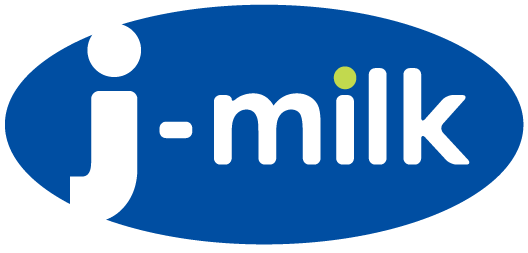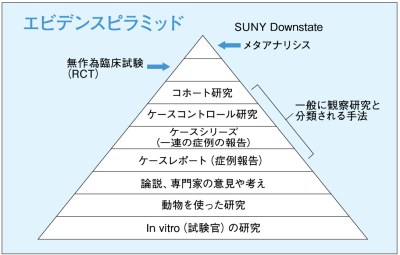2015年に発表された新しい知見を、続報として紹介致します。
2016年2月24日 牛乳の摂取と心血管疾患、ガンなどの全ての疾患との相関における、システマティックレビュー及びメタアナリシス
-牛乳または発酵乳の摂取と死亡率との間には一貫した相関はない-
一般社団法人Jミルク
(図の出典:Jミルク第41回メディアミルクセミナーニュースレター)
2014年11月17日 「1日にコップ3杯以上の牛乳を飲むことは骨折予防にならず、死亡率が高くなる可能性がある」 というスウェーデンの「男女における牛乳の摂取と死亡率・骨折リスク コホート研究」について
和文
「1日にコップ3杯以上の牛乳を飲むことは骨折予防にならず、死亡率が高くなる可能性がある」 というスウェーデンの「男女における牛乳の摂取と死亡率・骨折リスク コホート研究」について
(改訂)平成26年11月17日
平成26年11月 6日
一般社団法人Jミルク
1. 本研究の内容
スウェーデン人を対象とした研究(男女に食事調査をして平均最大20年フォローしたスウェーデンの二つの大規模コホートの解析で、牛乳を飲んだ量と骨折や死亡との関連を調べたもの)が英医学誌ブリティッシュ・メディカル・ジャーナル(British Medical Journal、BMJ)に10月29日に発表された。
発表された研究の結果は、次のような概要である。
女性では、1日200g 以下のミルクを飲むヒトに比べて1日200gのミルクを多く飲むこととフォローアップ期間に死亡するリスクの増加が関連していた。リスクの増加は1-2杯で21%、3杯以上で93%だった。また女性では1日1杯以上のミルクを飲むことと骨折リスクの増加が関連していた。男性では骨折でも死亡でもそのような明確な関連はなかった。
なお、研究では、チーズやヨーグルトなどの発酵乳製品の摂取量が、特に女性の間での死亡率と骨折頻度の低下と関連することも指摘し、その論理的根拠として、発酵乳製品と違い、牛乳には糖類の一種「D-ガラクトース」が多く含まれていることを示唆している。
2. 本研究に対する世論の反応
本研究の結果は、日本でも主要なネットニュースで報道され、衝撃的に受け止められている。
また、これまで牛乳の栄養健康機能については、国際的にも、長期にわたり膨大な研究が行なわれ、多様なエビデンスが発表されてきたが、本研究の結果が、これらの結果を覆す内容であることから、国内外で、本研究の正当性や結論の出し方への疑問も投げかけられており、研究者の間では、その評価をめぐって議論が行なわれているところである。
3. Jミルクとしてのコメント
こうした状況を踏まえ、Jミルクにおいては、本研究に対して専門研究者(牛乳乳製品健康科学会議・乳の学術連合の会員研究者)からのコメントを収集するとともに、国際酪農連盟等が集約した各国の研究者によるコメントなどを参考に、本研究に対する評価を行い、以下のとおり整理した。
なお、国際酪農連盟などでも、継続して、本研究に関する専門的な評価を行っているところであり、早い時期に、正式な見解が発表される見通しである。したがって、本見解は、中間的なものである。
(1) 本研究のような観察研究(健康・疾病に関するデータを何の介入もしないで行う研究)は、無数の制約条件に影響されており、正確な因果関係を示すことができないという性格を持っていることから、その結論についての取り扱いは、慎重でなければならない。
(2) また、本研究は、スウェーデンを中心とする近隣諸国の人々を対象としたものであり、ライフスタイルや生活環境が異なるほかの地域には当てはまらない可能性がある。
例えば、牛乳の摂取量が日本人の平均摂取量よりも多く、カルシウム摂取量においては、かなりの開きがある。本論文の調査対象である女性のカルシウム摂取量は700mg/日以上であるが、日本の場合は20歳以上の日本人女性431mg/日(厚生労働省 平成24年国民・健康栄養調査)となっている。
また、スウェーデンの牛乳には、ビタミンAが添加されている。(ビタミンAの摂取量が骨折リスクと関連することが知られている。)
(3) 牛乳については、これまで集積された科学的証拠(エビデンス)や多数の論文が、本研究の研究成果と相反する結果を示しているという事実を念頭に置くことが重要である。
【参考として示された主要な研究】
① 「牛乳を飲む男女と死亡率は低い相関」(日本のコホート研究, J. Epidemiol 2014.)
② 「660ml/日まで牛乳を飲んでも死亡とは関連づけられない」(ワーゲニンゲン大, Am J Clin Nutr 2011.)。
③ 「乳児、青年期において牛乳、乳製品の消費と骨の健康が正の相関」 (J Am Coll Nutr 2009.)。
④ 「牛乳、乳製品の前向きコホート研究のメタ解析において、成人女性の股関節骨折リスクと牛乳摂取量とに相関が見られなかった。」(J Bone Miner Res. 2011. )
特に、本年10月18日の日本で発表された同様のコホート研究(上記①)では、男性では、少なくとも1-2回/月の頻度で牛乳を摂取する場合、女性では、3-4回/週の頻度で牛乳を摂取する場合において、全く摂取しない場合と比較して、何れも死亡率の低下と関連するという結果が発表されており、これが注目されている。
(4) 本研究では、牛乳では骨折リスクと死亡率が増加し、醗酵乳製品では逆に低下するという結果の論理的根拠として、「D-ガラクトースがヒトの健康に良くないという」仮説を立てているが、これは、「実験動物(マウス、ラット、ショウジョウバエ)にD-ガラクトースを投与することで、酸化ストレスや慢性的な炎症が引き起こり、寿命の短縮を含む早熟老化をおこす実験モデル」を根拠としており、ヒトにまで一般化できるかどうかは不明である。
また、乳糖/ガラクトースの含量は、牛乳と醗酵乳製品で大きく変わらないこと、発酵乳製品は平均的な牛乳よりもビタミンK(ビタミンKは、骨と心血管系の健康との関係が知られている。)が多く含まれていることも考慮する必要がある。
以上のことから、本研究の論文を根拠に、結論を導くべきでなく、また食事のあり方(牛乳の摂取のあり方)を変更すべきではない。
また、このような研究の報道に当たっては、研究の手法や結果に対する他の研究者の評価、同様のテーマで行なわれた他の研究との比較などに配慮することが、特に重要である。
(以上)
【本件に関するお問い合わせ先】
一般社団法人 Jミルク
電話:03-6226-6352
広報G 箸本、普及G 高野
英訳 English
J-milk's argument for the cohort studies about adverse health effects of milk in Sweden
2014/11/21
1. Summary of this study
On 29 October, the study targeted at Swedes (the analysis of two large scale cohort studies which tracked both men and women for maximum of 20 years with the focus on their dietary habits and the examination of the connection between the amount of milk consumption and the risk of fracture and mortality) was published in the British Medical Journal.
Summary of the published study result is as follows.
In women, a higher risk of death was observed in the follow up period among ones who drank more than 200g of milk a day than the ones who drank less than 200g a day. The increase in risk was 21% for women with consumption of 1-2 glasses of milk a day and 93% for 3 glasses or more a day. Furthermore, the increase of the bone fracture risk was associated with drinking more than a glass of milk a day in women.
In men, no such clear association was observed for either bone fracture or death.
The study also pointed out that a higher intake of fermented milk products such as cheese and yoghurt was associated with reduced risk of mortality and fracture particularly in women, and they suggested as the logical explanation that drinking milk contains high level of "D-Galactose" (a type of sugar) unlike fermented milk products.
2. Reaction of public opinion to this study
The result of this study was broadcasted on major network news in Japan and perceived with the impact.
For many years, vast amount of studies were carried out on nutritional health functions of milk globally, and various evidences have been published. Since the result of this study has contents which overturn the traditional findings, the questions about the validity of this study and its method of drawing its conclusion were raised both in Japan and abroad, and there are discussions over the evaluation of this study among the researchers.
3. J Milk's comments
Under these circumstances, J Milk has collected the comments on this study from the specialist researchers (Milk and Dairy Products Health Science Commission, researcher members of the Milk Academic Alliance) and summarised our evaluation of this study by referring also to the comments of the researchers from various countries gathered by the International Dairy Federation.
However, this is still an interim report since the institutions such as the International Dairy Federation continue with their professional evaluation of this study, and their official views are to be announced at an early date.
(1). Observational studies like this one (a study performed by collecting data about health and illness without any intervention) get influenced by innumerable constraint conditions and have characteristics of their inability to identify correct causal relationship, therefore, such conclusion must be treated with caution.
(2). In addition, the subjects of this study were mainly the Swedes with some people of neighbouring countries, and this study may not apply to other regions with different lifestyles and living conditions.
For example, the milk intake in these countries is higher than the Japanese average, and there is considerable difference in calcium intake. The average calcium intake of the women who were the subjects of the survey in this study was more than 700mg per day, and the relevant average of the Japanese women aged 20 years and over is 431mg per day (2012 National Health and Nutrition Survey by the Ministry of Health, Labour and Welfare).
Furthermore, vitamin A is added to drinking milk in Sweden. (a vitamin A intake is known to be related to a bone fracture risk)
(3). In relation to milk, it is important to remember the fact that the scientific evidence so far accumulated and many previous articles indicate the opposite result to this study.
(Major studies provided as reference)
1). Milk Drinking and Mortality : Findings Ffrom the Japan Collaborative Cohort Study (Japanese cohort study, J. Epidemiol. 20154)
2). Milk and dairy consumption and incidence of cardiovascular diseases and all-cause mortality : does-response meta-analysis of prospective cohort studies (Warningen WageningenUniversity, Am J Clin Nutr.ition 2011)
3). Dairy and bone health (J Am J Clin Coll Nutr.ition 2009)
4). Milk intake and risk of his fracture in men and women : a meta-analysis of prospective cohort studies (J Bone Miner Res. 2011)
Particularly, in the similar cohort study published on 18 October this year in Japan, the lower death rate mortality was observed in the cases of the minimum milk intake of 1-2 times per month in men and 2-3 times a week in women compared to non-milk intake, and this result has attracted attention.
(4). This study formed a hypothesis that "D-galactose is not good for human health" as a rationale from the results which indicated increase of the bone fracture risk and the death rate mortality with drinking milk and decrease with fermented milk products. This hypothesis is based on the established experimental model for premature ageing including shortened life span caused by oxidative stress and chronic inflammation when D-galactose is given to laboratory animals (mice, rats and drosophila flies), and it is still unclear whether this result could be generalised to human.
Also, the amount of lactose/galactose in milk and fermented milk products are not so different, and fermented milk products contain more vitamin K than milk (vitamin K is known to be linked to the health of bone and cardiovascular system), these facts need to be considered.
From the above, a conclusion should not be drawn solely on the grounds of the article of this study, and eating habits (especially the way of consuming milk) should not be affected by it.
Also, when broadcasting such study, it is particularly important the other researchers’ evaluations of its study method and results to be considered and the other studies of a similar theme to be compared with.


